Peter Lopez Jr.'s Blog: Xulon Press Blog , page 30
April 2, 2019
Exploring Online Book Communities

At this point, most of us know the importance of having an online presence, particularly as an author. It’s the best way for authors and writers alike to establish and promote themselves within the publishing community. Whether we like it or not, the industry is moving in a digital direction. Event announcements, interacting with readers, and posting milestones all help fans feel more connected and informed. Readers have in turn established their own community on various social media platforms where they share their favorite books and authors with other book lovers. Let’s dive in right in and uncover the ins and outs of some of the most popular online book communities.
This social media platform is where readers get to show their creativity by showcasing perfectly poised photos. Instagram – or Bookstagram – is great for showing off gorgeous book covers, curated bookshelves, or re-creations of reader’s favorite scenes. When a reader posts images on Instagram they’re able to tag the author and even the publisher. This is a great way to show their support and interact with the books and authors they love. Below are some examples of some beautiful Bookstagrammer photos.
Photo courtesy of @myfriendsarefiction.

Photo courtesy of @melodyltang.
Youtube
One of the largest online book communities, ‘Booktube’ is where you’ll find the book community that exists on YouTube. On this platform, you’ll find book reviews and book hauls showcased while the comment section turns into an online book club. Since book reviews can be longer in video format, readers can expand on their thoughts and show their enthusiasm (or disappointment) about a book. Reader recommendations, bookshelf organization, or even information on how to contact publishers for advance reader copies are all big hits in this community. Click on the photos below to check out how these Booktube pros utilize this outlet. Hint hint: these ladies are raking in 50,000+ views, so they are definitely doing something right!


Courtesy of @AClockworkReader.
Book Twitter is the branch of Twitter where readers share links to their blogs, reviews, promote newly published videos, and broadcast about book giveaways and events. Twitter is managed in “real time,” making it a fast-paced, ever-evolving, content-rich environment. This community comes together to curate book content for each other with threads (long Twitter posts) of information and links.
Knowing what platforms readers use will help author’s know what content will be well received. The old phrase “work smarter, not harder” is very applicable when it comes to sharing on social media. Hopefully ,this post can help you find your social media tribe, wherever they may be and target them effectively!
The post Exploring Online Book Communities appeared first on Xulon Press Blog, Christian Self-Publishing.
March 28, 2019
Beta Readers: Part 2

Receiving the first round of feedback on your manuscript can stir up a mix of emotions. On the one hand, you will feel a sense of pride and accomplishment for making it this far in the process and having real reader feedback in your hands. The flip side of that, you may find yourself in another battle with self-doubt as you page through the comments. So, how can you use that beta reader feedback to take your story to the next level? If you haven’t already, now would be a great time to check out our previous blog post, Beta Readers: Part 1.
Organize it.
When the last piece of beta reader feedback comes in, gather every single note or comment into one place. Then, sort comments by chapter. If your readers submitted their notes in an email, copy and paste them all into a Word document you can print out and strikethrough as you complete. If you received handwritten feedback, I recommend taking the extra time to compile all the notes in one place, so you also have the ability to strikethrough the list as you work.
Evaluate the feedback.
One reason compiling all beta reader notes into one place and organizing by chapter is helpful is because you can quickly see if all your readers noted the same areas for improvement.
For instance, if you used three beta readers and all three or even two out of three noted that the first page of chapter one needs to grab readers’ attention faster, then you know that is one area you need to focus on. All readers may feel the same way if that page goes unfixed.
On the other hand, if only one reader makes a comment about a plotting issue, it may be something you evaluate later.
Set ego aside.
Reading through beta reader feedback for the first time can be overwhelming and will often stir up an emotional response. If you find yourself agitated or upset, it’s understandable—you are outside of your comfort zone. Take a step away from the feedback for a few days. When you come back to it, often you’ll realize feedback that felt harsh at first may seem more logical when you view it through a fresh lens.
Do easy revisions first.
There’s nothing like a few quick wins to keep the revision process moving. One way to trick ourselves into feeling productive and boost our confidence is to knock out easier revisions. If you used the wrong character’s name somewhere or didn’t put some dialogue in quotation marks—these are your go-to revisions off the bat.
Ruminate on harder revisions.
Don’t rush your way through the revisions that require heavy lifting. If you need to reorganize an entire chapter or find yourself deleting a character because he or she serves no purpose, be methodical with these changes. Instead of deleting those portions, paste them into a separate document. Who knows, that deleted character may just become the protagonist in your next book. Work is not always truly lost.
Don’t get discouraged.
Just like the writing process, there will be days of doubt and discouragement. Don’t stay in those feelings though. Shake them off with some fresh air and a walk, sit down with your favorite book, or call a friend to catch up. When our minds are in a good place, we do better work.
How do you like to organize your readers’ feedback? We’d love to hear your tips and tricks as well!
The post Beta Readers: Part 2 appeared first on Xulon Press Blog, Christian Self-Publishing.
March 26, 2019
Beta Readers: Part 1

You’ve successfully finished the first draft of your manuscript and are feeling pretty good about your story overall. Maybe you’re ready to take some time off before diving into revisions; or worse yet, you think it’s ready for editing. There is an integral piece of the revision process, however, many writers miss out on—beta readers. After proofreading your first draft, beta readers should be your next step.
Who Are Beta Readers?
Think of beta readers as test subjects, or guinea pigs, for your book. They are typically the first group of people to read your manuscript in its entirety. When you narrowed down your book’s target audience, beta readers should fall within that exact camp of people.
If the thought of narrowing down your target audience is still hard, choosing a broader spectrum of beta readers (male and female, larger swings in age groups, etc.) will help you narrow down your target audience to the exact group of people who should read and enjoy your book.
When deciding who might serve as beta readers for you, make sure they are comfortable providing you with honest and constructive feedback, enjoy reading in general, and also enjoy reading books within the genre you’ve written.
What Do They Do?
The key element of success when using beta readers is to ask them to take a high-level approach to your overall story, including plot, characters, pacing, and the manuscript’s readability as a whole. To ensure readers don’t stumble over spelling and grammar mistakes, do a full round of revisions on your work—especially focusing on mechanical errors—before you send your manuscript to anyone. Also, keep in mind, a beta reader is not the editor for your book and doesn’t take the place of one. Instead, beta readers merely test drive your story.
If you are looking for specific feedback from beta readers, it is beneficial to send a checklist along with a PDF version of your manuscript; a checklist will also keep your readers focused on the feedback you want. A few sample points to add to your checklist can include:
Were you interested in the setting?
Could you relate to the main character?
Did you feel drawn into the book from the very beginning? If not, by what page did you feel pulled in?
Were any parts of the story confusing for you? If so, where were they?
Did any of the material feel redundant or repetitive as you read?
Do you think there was enough tension/conflict within the story?
Was the dialogue on the light side or did you feel there was too much dialogue?
How about description—too much or not enough?
What did you think about the number of characters? Did you find there were too many to keep track of or not enough?
What is one item not on this checklist you feel I could do to improve this book overall?
Where to Find Beta Readers?
When looking for beta readers, consider finding three to four readers. I believe anything less than three readers doesn’t provide enough feedback for writers to work with—especially if one reader comes up short with feedback. Beta readers can be found in many places, including your church or book club, as well as Goodreads groups and your favorite social media sites. When searching for beta readers, on Instagram or Twitter specifically, use hashtags like #amwriting or #writinganovel to find other writers within your genre. Build a connection with them and then see if you can swap manuscripts to beta read for each other. I’m often hesitant to pull on family or friends to serve as beta readers. Feedback from beta readers is not simply to bolster a writer’s confidence but to find issues and while they can still be fixed and receive feedback from a testing group of your target audience.
Personally, I do not think writers should pay for beta readers; the exchange of money may or may not tamper with the feedback a writer gets back.
5 Last Pieces of Advice for Success
Give your beta readers a deadline of no more than three weeks to return their feedback.
Send your manuscript as a PDF and send your reading checklist.
Take a step back from your manuscript during this time.
Follow up with beta readers about a week before the deadline you provided.
Remember that the criticism you receive from beta readers are intended to improve your manuscript so even more people will enjoy reading what you wrote.
Have you used beta readers before or been one yourself? What did you enjoy most about the process? Up next we are going to be talking about what to do with the constructive criticism and comments you get from those beta readers! To get started, take a look at our recent article about Learning How to Take Constructive Criticism.
The post Beta Readers: Part 1 appeared first on Xulon Press Blog, Christian Self-Publishing.
March 21, 2019
Pushing Through the Middle: Reviving Your Fiction Story

When writing fiction, oftentimes the middle is where most writers hit a wall and do one of two things: they quit or they keep going. The middle, however, is no place to give up. Instead, it’s time to hone in on what you can do to make the middle zone the best it can be.
Every story is made up of three parts: a beginning, middle, and end. The beginning will always be the easiest part to write. Like your story, you are full of momentum and excitement and the beginning can thrive off those two motivations alone. The same goes for the end—your characters are desperate to reach their conclusions and all you have to do is capture it on paper.
The middle of your book, however, is twice as long as the beginning or end and is where all writers naturally lose their momentum. If you’re a pantser, the middle zone is the time to commit to outlining. If you’re a plotter, now is the time to re-examine your outline. An outline isn’t enough though. The middle of your story is the time to:
Create subplots.
No piece of fiction can be built on one plot alone; subplots are what help carry your story and characters through the middle of your book. Utilize your minor characters to weave smaller plot lines into your overall story or create a second plot line for the protagonist—either way, it’s time to put everyone to work to keep your story moving.
Focus on minor characters.
The middle is a great place to lean heavier on your supporting cast. Who is working for or against the protagonist? Are there sides to choose? Start having characters draw lines in the sand. The middle is also a good place to introduce new minor players. While you don’t want to bring in a character who does nothing to move the plot along, new characters can stir up drama.
Shake up a relationship.
Do all signs point toward your protagonist finding true love with a certain someone? Steer them away from each other or break them up. It’s fiction, you can do that. You can also resolve to bring them together later if that’s the end goal or maybe this particular relationship needs to end for the protagonist to find him or herself in love with someone else.
Escalate conflict.
Build up to the climax of your story by escalating conflict and drama. A story arc should feel a bit like a rollercoaster for readers, smaller dips and curves that lead up to a huge loop or drop before straightening back out. The middle of your story needs those smaller dips and curves that keep characters and readers guessing.
Find your protagonist’s point of no return.
Your main character must find his or her threshold where there is no turning back. This point of no return must take place somewhere in the middle of your plot; it will serve as the catalyst for climax and conclusion.
Raise uncertainty.
No part of a fiction book is certain until the end. Feel free to raise uncertainty in your readers’ minds throughout the middle.
Remember the power of three.
Just as a story has three parts, you can also introduce story elements in threes as well. Your protagonist could go on three job interviews, have three dates, or have the same dream three nights in a row—however you choose to use the power of three in your story just make sure it serves an overall purpose in your story arc.
We’re curious, how do you push through writing in the middle of your book? Comment below with your best tips and tricks!
The post Pushing Through the Middle: Reviving Your Fiction Story appeared first on Xulon Press Blog, Christian Self-Publishing.
March 18, 2019
Learning How to Take Constructive Criticism

There’s a first time for everything
I can still remember my first real exposure to constructive criticism of my writing. Sophomore year of college, I received my first C+ on a paper in my entire educational career. Immediately, I rationalized the grade had to be a mistake. I read the remarks my professor left on each of the eight pages I’d written, and I grew defensive and angry. Preparing myself with counterpoints, I scheduled a meeting during office hours to argue my stance with him.
Before I had the chance to challenge his grading, my professor hit me hard with the truth. “We both know you can do better than this,” he said. “You’re good, and I am holding you to a higher level of accountability than others. Your grade stands. But I know your next paper will be back up to the A level quality of work you are capable of producing.” I left that conversation understanding, probably for the first time, what it felt like to receive constructive criticism on my writing. And you know what? I took another class with that same professor the next semester because I knew he would challenge me and push me to grow in my abilities. More than that though, I knew I would always be able to trust his feedback.
To this day, I still review pieces of my writing and think, “Is this your best?” That professor taught me a lesson I’ve carried with me for more than a decade. Learning how to receive feedback, and use it constructively, is something we as writers must grow into on our own. Here are my top tips for lessening the sting and using it to better your craft.
1. Take a positive approach
We have a natural tendency as writers to assume the worst when we get feedback on our work. However, a simple shift in mindset can make a world of a difference. By focusing on the idea that someone else took time out of their day to read what we had to say, and also provide feedback, shows they genuinely care and want our work to be the best version it can be.
2. Replace doubt with confidence
Remind yourself that you took a huge leap of courage by stepping outside your comfort zone and that in itself is an accomplishment worth celebrating. Our self-doubt often exaggerates our emotional response to feedback, but we should remind ourselves that we are confident and capable enough to use feedback to further improve our work.
3. Step away when necessary
When the feedback gets too overwhelming, there is no harm in distancing yourself from your writing for a few days. The time away can clear your head and allow you to see your writing from a different viewpoint. After some space, that is when the best revisions take place.
4. Don’t take it personally
It’s hard to keep a boundary between us and what we create, but feedback on our work isn’t a personal dig at us and our capabilities.
5. Feedback will always be a part of creating
Whether it’s the voice in our heads, reviews on Amazon, or a fan letter in our mailboxes, we will never run short on criticisms as writers. Embracing it, processing it, and using that feedback however it best serves us as creatives is the only way to truly interact with any form of criticism.
Can you recall the first time you experienced criticism with your work? How did you take it and what sort of advice would you lend others going through that part of the writing process? Remember, constructive criticism uses the word constructive for a reason. Don’t let someone’s critique of your writing get you down, take that feedback and utilize it for the better!
The post Learning How to Take Constructive Criticism appeared first on Xulon Press Blog, Christian Self-Publishing.
March 8, 2019
Books to Read for International Women’s Day

It’s International Women’s Day, and we’re celebrating the only way we know how: with books.
Specifically, with books written by some amazing female authors who are determined to inspire through print and leave their mark on future generations. Whether they’re talking about the importance of friendship, how we can be better together, truths that will empower us, or how women can support the growth of the church, these new books are on everyone’s lips. Curl up with these weekend reads and support these female authors!

Lies Girls Believe: And the Truth that Sets Them Free by Dannah Gresh
Today’s preteen and adolescent Christian women have more noise than ever to sift through: from online bullying, differing opinions of teachers, parents, and peers, to pressure on social media to be picture-perfect at all times, the struggle is real. “Prepare your daughter for the difficult challenges she’ll face in the world today with sections addressing: lies about God, lies about friendship, lies about the future, lies about herself, lies about boys, and more! This fun, easy-to-read book engages your daughter in the twenty most important truths she needs. She’ll help solve problems using fun sidebars and it’s packed with wisdom, quizzes, games, exploded quotes, and graphics to help her absorb the message.”

Girl, Stop Apologizing: A Shame-Free Plan for Embracing and Achieving Your Goals by Rachel Hollis
Rachel Hollis is at it again! The #1 New York Times bestselling author of Girl, Wash Your Face released her new book on March 5th. Her books and crazy-popular Rise Podcast have made Hollis a household name. Hollis is the “self-taught on Google” founder of a multi-million dollar media company, and a role model for women both young and old. “With a challenge to women everywhere to stop talking themselves out of their dreams, Hollis identifies the excuses to let go of, the behaviors to adopt, and the skills to acquire on the path to growth, confidence, and believing in yourself.”
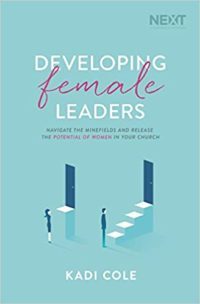 Developing Female Leaders: Navigate the Minefields and Release the Potential of Women in Your Church by Kadi Cole
Developing Female Leaders: Navigate the Minefields and Release the Potential of Women in Your Church by Kadi Cole
“What would your church look like in the future if it were to maximize the dormant gifts of the women God has brought there? In Developing Female Leaders, Kadi Cole, twenty-year veteran in leadership and people development, offers a practical strategy to help church and organizational leaders craft cultures that facilitate the development of women as volunteer and staff leaders.”
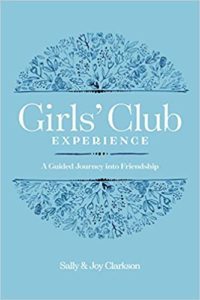
Girls’ Club Experience: A Guided Journey into Friendship by Sally, Sarah, and Joy Clarkson
Who doesn’t want richer female friendships with other awesome women? A go-to guide for developing deeper, more meaningful relationships with other like-minded females. “Whether you work through the book with a current friend, a new friend, or a group of friends, the chapters, discussion questions, and exercises are intended to draw you into deeper knowledge and trust of one another.”
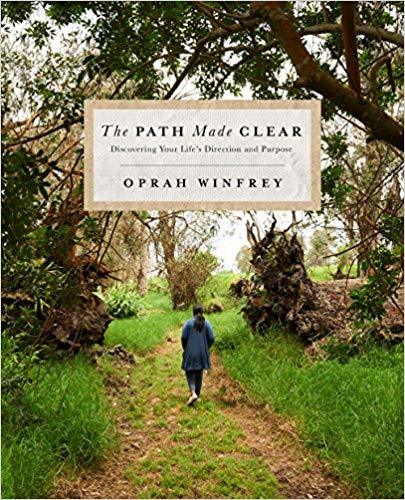
The Path Made Clear: Discovering Your Life’s Direction and Purpose by Oprah Winfrey
“In her latest book, The Path Made Clear, Oprah shares what she sees as a guide for activating your deepest vision of yourself, offering the framework for creating not just a life of success, but one of significance. The book’s ten chapters are organized to help you recognize the important milestones along the road to self-discovery, laying out what you really need in order to achieve personal contentment, and what life’s detours are there to teach us.” Comes out on March 26th!
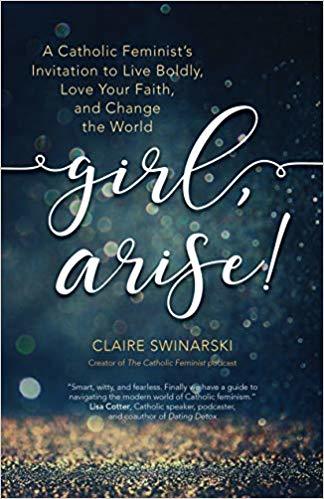
Girl, Arise!: A Catholic Feminist’s Invitation to Live Boldly, Love Your Faith, and Change the World by Claire Swinarski
Claire Swinarski, writer and creator of The Catholic Feminist podcast tackles a difficult question: is it possible to be both a Catholic and a feminist? “Swinarski reconciles the two identities by demonstrating the strength and abilities women have to share with the Body of Christ, the importance of women throughout the history of the faith, and how the love you experience through Christ and the Church can change you and the world around you.”
Have another book you’d like to add to this list? Comment below!
The post Books to Read for International Women’s Day appeared first on Xulon Press Blog, Christian Self-Publishing.
March 5, 2019
Changes Are Coming to Your Favorite Book Publisher!
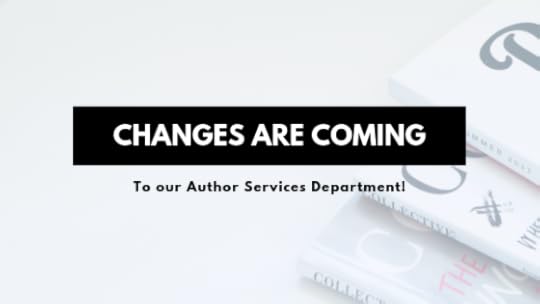
We’ve got some exciting changes coming to our Author Service Department this March. These changes will affect the way we do our job as your book publisher. Just as a book has a beginning, middle, and end, so does the process of creating a book. Imagine it like running a relay race. You will now have a dedicated publishing expert to run beside you through each leg of the race who will help you pass the baton (your manuscript) to the next publishing expert!
Pre-production
Pre-production is the stage you enter once you’ve selected your publishing package. It’s the first step in your publishing plan! During this time, your rep here will guide you through preparing your files, completing your questionnaires, submitting your manuscript, and going through editing. They’ll also be around to assist you whenever those “how do I..?” questions come up.
Production
This is the time when we actually start creating the book so it can go to the printer. We’ll start compiling all those puzzle pieces you worked on in pre-production and start to assemble them so they fit together as planned. Your rep here will guide you through this process with ease. They’ll be around to help you with viewing and making changes to your cover and interior text files and they’ll make sure you give us your approval to upload your book to the printer.
After Press
After Press refers to the time after your book is completed and is available for sale. It is everything that occurs after the book has been printed. Your rep here will help with any future changes you may wish to make to your book. And, they’ll also help you understand your royalties.
One of the most exciting parts of self-publishing is that you get to have a say in all of this. This is one of the biggest differences than what you’d get at a traditional publisher. You’re involved in every step of the process, ensuring your book is exactly what you want it to be. We are very excited about these changes and think that they will only improve our processes and the quality of publishing we provide our authors! We’re proud to be the publisher you chose and hope these changes make your experience with us even better.
The post Changes Are Coming to Your Favorite Book Publisher! appeared first on Xulon Press Blog, Christian Self-Publishing.
February 11, 2019
New Year, Old You: Restarting a Failed Writing Resolution

Less than two months ago, many of us took the time to write out long lists of New Year’s resolutions. We dreamed of becoming the next Bob Goff or Shauna Niequist—not only finishing the writing and publishing process, but also seeing our books at the top of bestseller lists. The reality for many, however, is strikingly different: Most New Year’s resolutions fail by the second week of February.
If you haven’t touched your computer in a week or the last “date modified” on your work in progress shows you haven’t accessed the file since January—don’t fret. You can still jumpstart your failed New Year’s resolution to write a book in 2019.
Time Management is Key with New Year’s Resolutions
The first step in reviving your writing resolution is to take a fine-toothed comb to your schedule. With 168 hours in every week, an inventory of how you spend your time is vital. Identify what you allot every hour of your day to. This includes work, sleep, family time, TV, social media, exercise, and more. Be ruthless in your data gathering stage. Once you have the daily breakdown in front of you, begin to pare down the extraneous activities. Then fill in those newly free time blocks with writing time. For instance, if you spend three nights a week watching TV for an hour and a half, reallocate those four and a half hours to writing and watch your word count soar.
6 Tips to Reach Your Writing Goal
Once you have a grasp on your schedule, use these steps to restart your writing resolution:
Identify your “why.”
To connect with and stick to your writing goal, you must have a personal attachment to it. Ask yourself, “Why do I want to write this book?” Your answer is your “why.” On the days when you have a head-on collision with writer’s block or you have to decide between an hour of mindless scrolling on social media or writing a few more pages, your “why” will guide you back to your goal.
Think small.
When goals are too big, they feel unattainable from the start. Go back and review your writing resolution again. If your broad goal was to “write a book in 2019” reduce that resolution to “write three chapters per month.” That is the equivalent of 33 chapters by the end of the year. Was your original writing goal a specific daily word count? Revise it to a daily page count goal. Smaller numbers induce less anxiety, which makes your writing goals easier to reach. Tim Ferriss, author of The 4-Hour Work Week, says that continuous success with smaller goals helps us build more confidence. That newly attained confidence then propels us forward to reach more milestone goals.
Write it down.
Scribble your writing goal on a bright-colored sticky note and place it on your bathroom mirror so it’s right in front of you at least twice a day. The daily, visible reminder will keep your writing resolution top of mind.
Be flexible.
Rachel Hollis, author of Girl, Wash Your Face, said if she hadn’t learned to write outside her comfort zone, she’d never finish writing a book. Instead, she wrote most of her best-selling book on airplanes and in hotel rooms. So, train yourself to take a notepad or your laptop wherever you go and squeeze more writing time into your schedule.
Incentivize yourself.
Who doesn’t love a good reward system, right? Your incentives don’t have to be lavish. If you love ice cream, maybe you reward yourself with a bowl of ice cream when you write 4,000 words in a week. Then, at 20,000 words you treat yourself to a manicure—that hand massage at the end would be a treat for overworked hands. Place a list of your rewards next to your computer to serve as motivation to keep writing.
Be kind to yourself.
The truth is, no matter how organized you are or how enticing your reward system is, there will be days when you won’t be able to write. Give yourself the grace to be okay with those less productive days. When the pressure becomes too much, give yourself a period of rest then try again the next day.
Which tips from this article do you plan on infusing into your 2019 writing resolution? Don’t let the things you cannot change bog you down. Get right back on the writing wagon and check this off of your New Year’s resolutions list!
The post New Year, Old You: Restarting a Failed Writing Resolution appeared first on Xulon Press Blog, Christian Self-Publishing.
February 5, 2019
Love & Letters: The Perfect Books for a Valentine’s Day Gift

You know the feelings well—fluttering butterflies in your stomach, the inability to think straight, and the constant need to wipe your sweaty palms on your jeans. Your body is overcome with pure fear, much like you were on your first date, but this time you’re staring at the mall entrance. You are in need of some Valentine’s Day gift ideas that will express every unspoken word of love and adoration you have in your heart for your significant other, but achieving such a feat is the equivalent of climbing Mount Everest—many have tried, and many have failed. You only need two items to wow your special someone: a gift (why not use a book?!) and a few words of your own.
Love Stories That Stand the Test of Time
First, you’re going to need some inspiration. We’ve compiled a list of epic love stories, personal letters, and more. Whether you’re in need of a Valentine’s Day gift for him or for her, these books look at love from perspectives both old and new. Use a red ribbon to tie your letter on top of one of these books and consider the summit of Mount Everest reached.
Classic love stories:
Wuthering Heights by Emily Brontë
Pride and Prejudice by Jane Austen
Gone with the Wind by Margaret Mitchell
Romeo and Juliet by William Shakespeare
The Age of Innocence by Edith Wharton
Written from the heart:
Devotedly: The Personal Letters and Love Story of Jim and Elisabeth Elliot by Valerie Shepard
Love: Quotes and Passages from the Heart by B.C. Aronson
The World’s Greatest Love Letters by Michael Kelahan
To read together:
Praying Circles Around Your Marriage by Joel and Nina Schmidgall, Foreword by Mark and Lora Batterson
The 5 Love Languages by Gary Chapman
Love Does by Bob Goff
Back to Basics
Long before roses, candy, and jewelry were used to show one’s love on Valentine’s Day, there was the love letter. In 1415, Charles, the Duke of Orléans, penned the oldest-known valentine to his wife, Bonne of Armagnac. His words, “My very gentle valentine,” opened the letter.
Gifts, or words, from the heart may be the most unexpected and most cherished gift you’ll ever give your partner. Before your sweaty palms return, remember that you already have all the material you need to write the most beautiful love letter—your memories and the small moments that made you fall in love with each other.
If you’re palms are still a bit damp, here are six tips to write a beautiful love letter:
Start simple. Sit down for 15 to 30 minutes and write down all the reasons you love your partner and some special memories you have together. (If it makes you more comfortable, write a rough draft using tips three through six and then go back to the second tip.)
A handwritten letter is the gold standard. Use a high-quality, thick paper and a pen with black ink that won’t skip as you write. These tools ensure your letter will stand the test of time.
A grand opening. Instead of using a cute nickname for your significant other in the opening line, use his or her first name. It may seem more formal when you write it, but it will lend a more classic feel to your letter.
Use your notes. When writing the body of your letter, refer back to the list you made. Maybe start by telling your partner one of your favorite stories about falling in love with him or her—something you’ve never shared will be even more special.
Expand on your thoughts. The second portion of your letter can be some of the reasons you love your partner; use this time to tell your special someone some thoughts you wouldn’t typically share. If you wrote “I love your eyes,” on the list you made, you could expand this to “I love how your eyes convey the depths of your love when you look at me,” in your letter.
The signature. Instead of the more formal, business correspondence closing lines like “Sincerely” and “All the best,” use this space as one last place to convey your love. “Ever thine,” “All my love,” and “Endlessly,” are fun and romantic ways to end your letter.
We’re curious, have you ever received a love letter? If so, how did it make you feel to read how much someone loves you?
The post Love & Letters: The Perfect Books for a Valentine’s Day Gift appeared first on Xulon Press Blog, Christian Self-Publishing.
October 13, 2018
Press Releases: Everything You Should Know

As an author, a great way to generate interest in your new book is through a press release. If you are unaware of what press releases are, why they are important, what goes into them, or are unsure of the best possible way to approach them, spend a few moments here learning about their function.
What is a press release?
A press release is a great way to appeal to a broad audience through media outlets. It’s a message written with the intention of getting information circulating about your book. As an author, a press release is a great way to gain attention and interest in your newly published book.
What information goes into a press release?
Things included in press releases are the title and subtitle of your book, date of publication, ISBN of your book and e-book, biographical information about you as the author, and a brief summary or synopsis of what you have written. Press releases can also include key quotes from the book and are always written with the intention of generating interest–this usually include your book’s purpose and timeliness! Why is your message important for the world to read right now? What is that message? These are factors that grab audiences’ attention.
Do’s and Don’ts
You probably won’t write the press release for your book; that’s what my job is for! However, here a few do’s and don’ts in case you are ever given the opportunity to answer a questionnaire or are contacted by your publisher for information for a press release.
Do:
Give biographical information! Where did you work or go to school, and what did you study? Do you have any degrees or experiences that make you an expert on the topic of your book? Have you written a book before? This is all helpful information because it builds your ethos, or credibility, as the author!
Answer the questions thoroughly. No one knows your book like you do–you have carefully planned, crafted, and revised, and now it’s out of your hands. Good news, though! You have this opportunity for one more pitch. Take the time to write a few sentences about the book’s message or purpose, and then a few more about why that message is important! Even if everything you say doesn’t end up in the press release, chances are you’ve captured the spirit of it and your passion for your book can be similarly captured by one or two quotes from what you’ve written.
Give up-to-date contact information. This goes at the top of each press release, specifically so that local media can contact you for more information. This means making sure you have a phone number and email where you can be reached, and if you have a website or blog, it doesn’t hurt to include those! They allow you to present the public with a sort of catalog of your work.
Don’t:
Answer “yes” or “no” when you are asked any questions about your book or yourself. It makes for a stiff press release if there is no charisma or personality about the particular details of your book!
Expect your readers to know what you know about your book. If you were to speak with a stranger about the book you’ve just written, you would probably not expect them to know everything that you do about the topic. Similarly, don’t expect the media or the broad audience of readers to be experts! Tell them what they are going to learn or experience if they choose to endorse or buy your book.
Ignore correspondence from your publisher. There may be clarifying or follow-up questions, so make sure you respond in as timely of a manner as possible (this is also where up-to-date contact information comes into play). If you are impossible to contact, your press release may go out without critical information to the media!
Wrapping up
You’ve got this! Maybe you’re in the process of writing or maybe you’ve completed your book already. Regardless, your hard work is going to pay off because your editors and publishers believe in you. Press releases are just little tools to grab the media’s attention so that news about your new book can disseminate to as many people as possible. Spend the extra 20 minutes giving information you want to appear in your press release; it will be worth it.
The post Press Releases: Everything You Should Know appeared first on Xulon Press Blog, Christian Self-Publishing.
Xulon Press Blog
- Peter Lopez Jr.'s profile
- 8 followers




